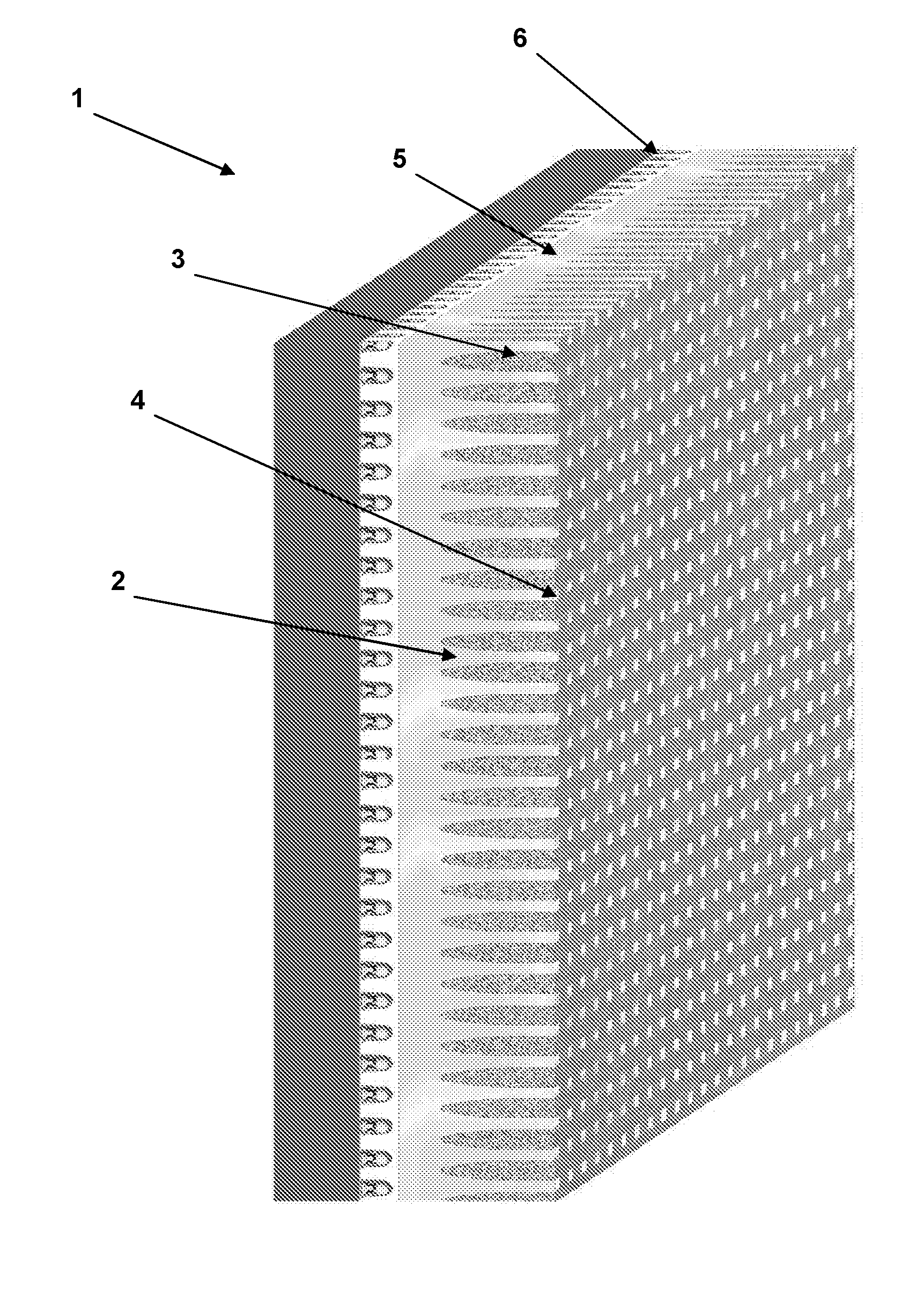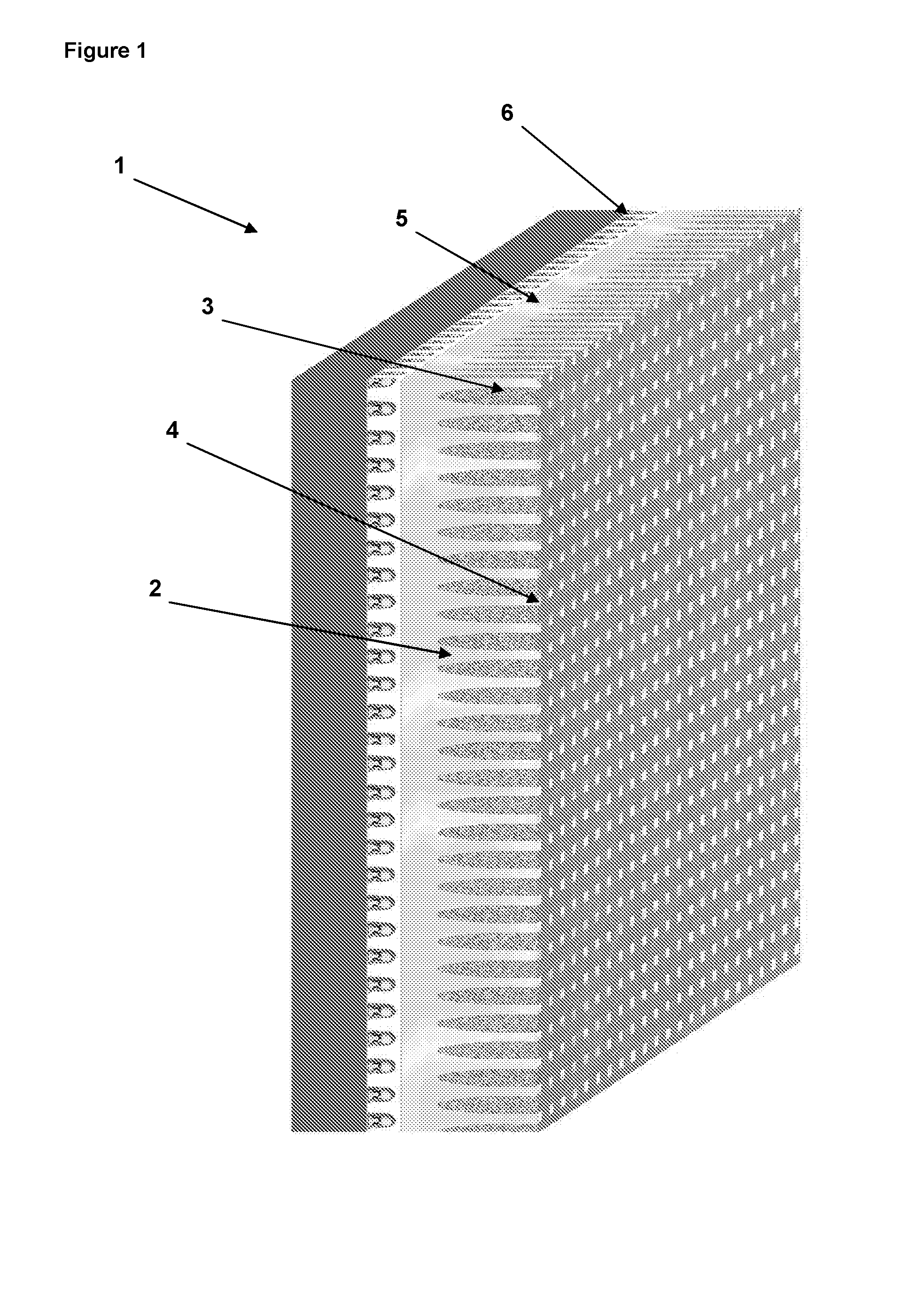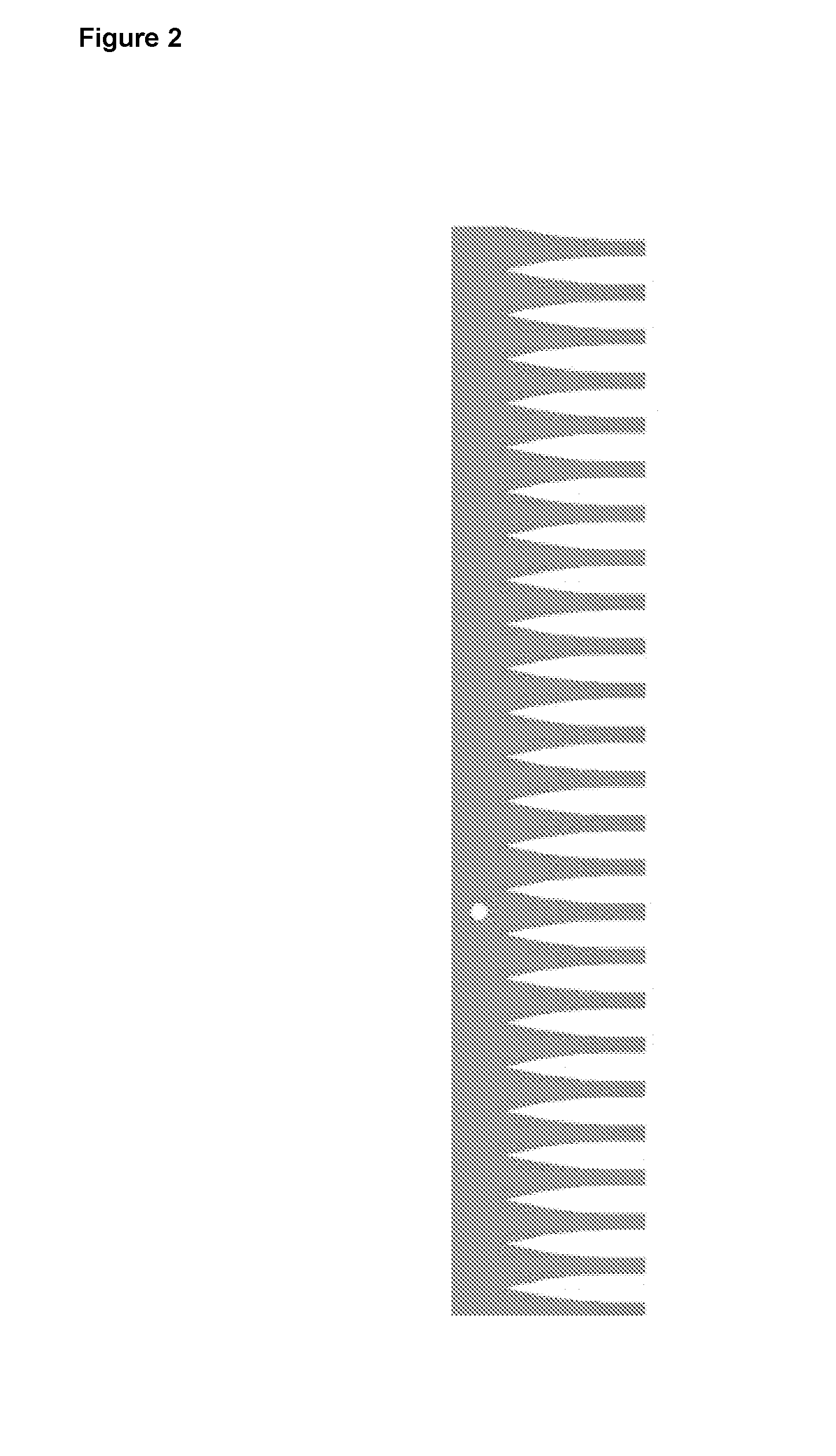Light system for building structures
a technology for building structures and light systems, applied in lighting and heating equipment, instruments, manufacturing tools, etc., can solve the problems of easy damage to displays, poor durability, and difficult to integrate the known kind of displays with the building structure in a discreet manner, and achieve the effects of low power, energy saving, and economical operation
- Summary
- Abstract
- Description
- Claims
- Application Information
AI Technical Summary
Benefits of technology
Problems solved by technology
Method used
Image
Examples
Embodiment Construction
[0023]The following description of the preferred embodiments of the invention is not intended to limit the invention to these preferred embodiments, but rather to enable any person skilled in the art to make and use this invention.
[0024]The lighting system of the present invention may be used as a sign for pedestrians, vehicles, or bicycles in concrete barriers or abutments, may be used as a display in or on building walls, floors, or ceilings, or may be used in any other suitable environment.
[0025]Though rods of limited opacity may be employed in certain instances, typically a preferred rod will be made of any transparent or otherwise translucent material. Preferably, the material has percentage transmission of at least about 50%; more preferably at least about 75%; and most preferably at least about 90%. Preferably, the material is at least partially amorphous or more preferably is substantially entirely amorphous glass or a plastic such as acrylates, methacrylates, polycarbonates...
PUM
| Property | Measurement | Unit |
|---|---|---|
| transparent | aaaaa | aaaaa |
| translucent | aaaaa | aaaaa |
| colors | aaaaa | aaaaa |
Abstract
Description
Claims
Application Information
 Login to View More
Login to View More - R&D
- Intellectual Property
- Life Sciences
- Materials
- Tech Scout
- Unparalleled Data Quality
- Higher Quality Content
- 60% Fewer Hallucinations
Browse by: Latest US Patents, China's latest patents, Technical Efficacy Thesaurus, Application Domain, Technology Topic, Popular Technical Reports.
© 2025 PatSnap. All rights reserved.Legal|Privacy policy|Modern Slavery Act Transparency Statement|Sitemap|About US| Contact US: help@patsnap.com



